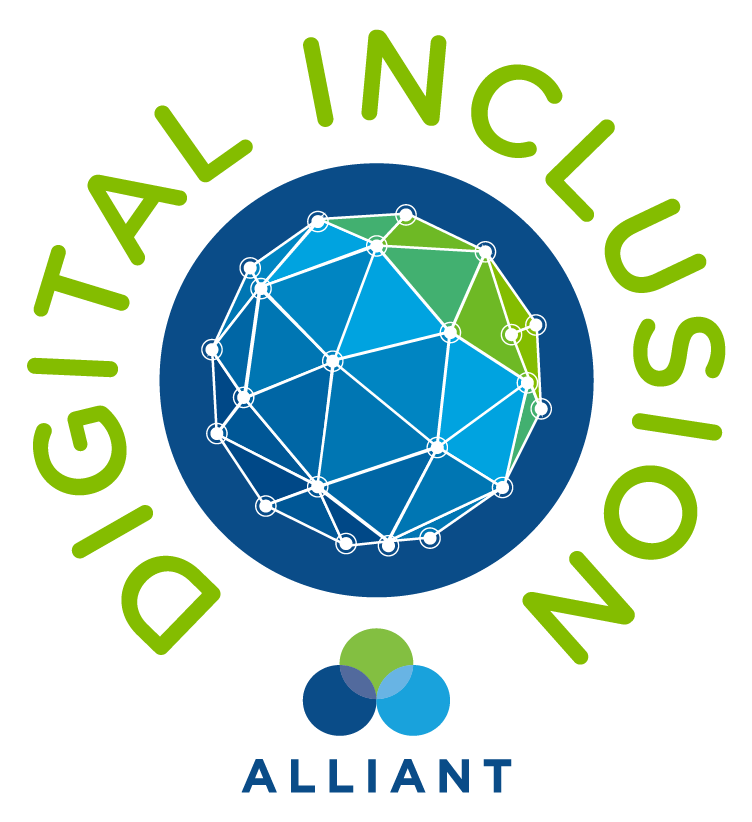
What is digital inclusion?
Digital inclusion is the distribution of resources – including broadband access, digital devices, and educational materials – that enable individuals to thrive in a fully digital-based society.
Digital inclusion is the means to create a digitally equitable society. Our communities will be digitally equitable when we’ve addressed the systemic issues creating a divide so that everyone will have the opportunity to live life to the fullest.
Why digital inclusion is important
Across the country, unequal digital access has created economic and financial literacy disadvantages for our most vulnerable communities. We move our money online, book our vaccine appointments online and learn online. Technology and internet access have become a necessity rather than a luxury.
The problem expands across income, race, education, age and location:

Of adults 65 years old or older, only 53% have a smartphone and only 59% have home broadband

Of households making less than $30k per year, only 56% have home internet

Over 21 million Americans in rural areas are impacted by unreliable connections or internet price gouging.

1 in 5 parents with children say their homework can’t be completed due to lack of computer access or an unreliable internet connection.

Lack of technology education means that when families and individuals are given digitally-connected devices, they are often left disconnected and unused.

One-quarter of Hispanics and almost one-quarter of blacks are smartphone only internet users, compared with about one-in-ten whites.

66% of Black households and 61% of Latinx households are without a broadband connection.

42 million people in the US lack high-speed connectivity (fixed or wireless).
Digital equity will create opportunities for financial inclusion and move all of us closer to the American Dream. At the Alliant Credit Union Foundation, we can create real change for many generations.
Note:
Third party statistics sourced from https://www.connectingjusticecommunities.com/digital-divide-part-1/2020/08/ , https://www.pewresearch.org/internet/2020/04/30/53-of-americans-say-the-internet-has-been-essential-during-the-covid-19-outbreak/ , and https://www.govtech.com/network/How-the-COVID-19-Pandemic-Shed-Light-on-the-Digital-Divide.html
